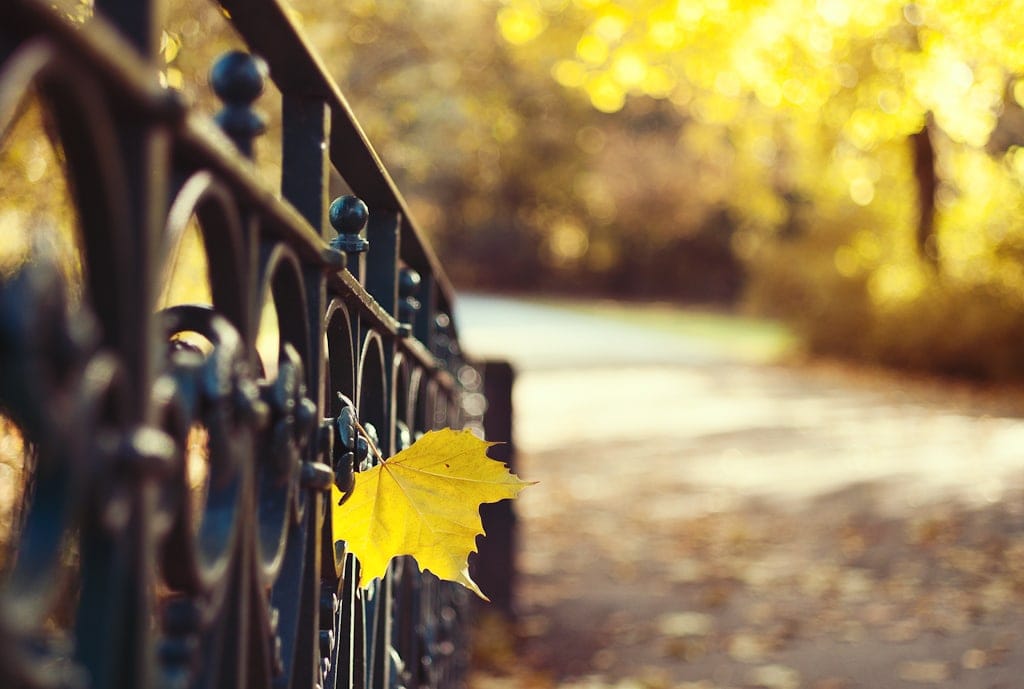In order to help you escape the typical autumn photo that everyone is taking, last week I showed you 7 creative ways to photograph a different autumn, today I would like to explain some very important aspects to consider when going out to take autumn photos. In today’s article, we summarize the photo itself a little and analyze other factors, external to the photo but that will greatly influence whether you get a normal and soft photo or a large and spectacular one.
We’re going to get in trouble.
- The best time to enjoy autumn photography is early in the morning or late afternoon.
- These are times when the light is at its peak and will help us capture unique images.
For afternoon photos, if the afternoon weather is not very clear, look at your own shadow, if it is longer than your size, this is the perfect time, there the sunlight is softer and more golden, and allows you to capture extremely spectacular photos. Believe me, the same photo that at another time of day (tapping at noon) would have seemed insipid and boring, taken early in the morning or late afternoon will surprise you.
Leaving sooner or later also allows us to find the places a little more “clear” from the crowd. A very otoñal photograph tends to show a very small number of people, perhaps only one (to express loneliness perhaps?), At most two (two people walking together, transmitting intimacy and closeness perhaps). We may even be interested in the scenario being totally clear if at some point we want to represent an unpopulated landscape of people.
Another “great” time to take autumn photos is when you come across a fog bank. It must match a place or a photographic landscape, a place that will correspond to an interesting photo. It’s not about photographing the fog because it is. Fog is usually an escort, an “ambient” element, while the protagonist is this landscape, this tree, this church or this path.
If you want to scare away the fog moments and places, be aware of the weather forecast on the eve of your departure day.
Improvising is fine, but if you want to get a nice autumn photo, you have to prepare some things in advance, one of them is a list with things, places and elements that you want to photograph, it doesn’t have to be. a very exhaustive list, you won’t have to follow this list to the letter, but it’s an orientation that will help you go in the right direction when you take a photo tour, rather than improvise aimlessly.
Think of the places you know where you can find autumn patterns, surely there are one or two places near you where you can find photographic visual content: a park, a bridge, a tree, a stream, leaves or chestnuts falling to the ground, baskets of seasonal fruit, in short, any element that connects the viewer with autumn.
Ah, important: autumn is not what you want to convey in yourself. You want to tell a story, make the viewer perceive an emotion inside. Beyond saying “Oh, what a beautiful autumn photo,” the viewer should notice something in the photo. . Think of autumn and the stories that can characterize it, and try to describe one: loneliness, silence, old age, tenderness, warmth?You’re the author of the story, you decide.
Solo: Unless you need logistical help installing or securing the equipment, or bring a companion as a model for an autumn portrait, the best autumn photos will be taken when you are alone. Taking a photo tour with more people implies a commitment As much as your friends love your photos, support you and tell you to take them easy, they will wait for you, in the end you end up taking the photos in a hurry, you focus less, if in one or two shots the photo comes out It is difficult to keep playing with the settings to your liking until you get the photo you are looking for , regardless of the shots.
If you want to practice a serious autumn photograph, it is best to go out alone, or pay with your companion or group of friends for a short break during which they will do something different while you calmly (and your ball) doing that. Do you like to photograph more?
The exception to this is if you go out with other photographers who are also equipped with cameras and you all go out for the same purpose, photograph the fall, not only wouldn’t it be a bad idea, on the contrary, sharing your experiences. With fellow photographers, you can learn new perspectives, listen to constructive reviews and see different ways to photograph the same with different results.
As this is an excursion (even if there is only one hour left in the nearest park), you will need:
I can’t give you the exact settings because they’re going to vary by scene, time of day, amount of light, whether there’s sun or clouds. You have to test (and learn). Yes, I can suggest the setting you would use as a starting point to take the first or second test photo, from which you would change these parameters one way or another.
Autumn is a light season, or at least less intense than summer, for example, if you add to that the ideal time to take an autumn photo, which would be early in the morning or late afternoon, you end up with a situation that requires very special adjustments.
Next week, I’ll reveal the settings I personally use to take autumn photos and explain what combination to use aperture, shutter speed, and ISO depending on the type of fall photo you want to use.
If you don’t want to miss it, stay tuned next week?

